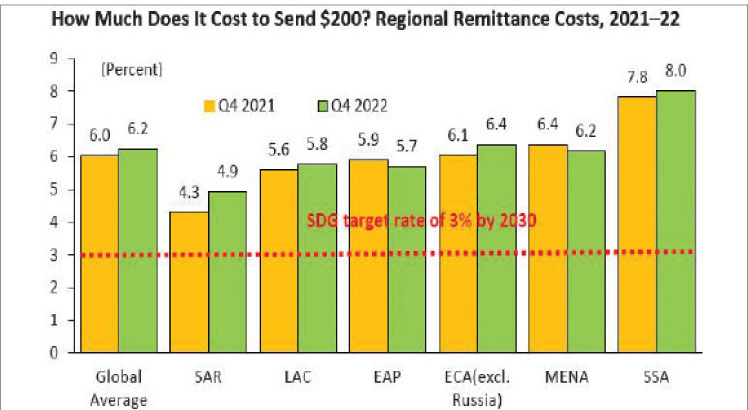Officially recorded remittance flows to low- and middle-income countries (LMICs), including Malawi, are estimated to grow this year as economic activity in remittance source countries is set to soften, limiting employment and wage gains for migrants, the World Bank has said.
In its latest Migration and Development Brief released yesterday, the World Bank projects the remittances to LMICs to grow by 1.4 percent to $656 billion.
The bank has also revised upwards 2022’s growth in remittance flows to eight percent, reaching $647 billion.
World Bank global director of the social protection and jobs global practice Michal Rutkowski observed in an accompanying statement to the brief that remittances are highly complementary to government cash transfers and essential to households during times of need.
“The World Bank is leading analytical and operational work on global migration to facilitate remittance flows and reduce costs,” he said.
On his part, Global Knowledge Partnership on Migration and Development head and lead author of the report Dilip Ratha said remittances have become a financial lifeline in many economies through the pandemic and will become even more so in the foreseeable future.
He said: “We have stepped up collaborations with source and recipient countries to improve data and leverage remittances to mobilise private sector capital through diaspora bonds and improved sovereign ratings.”
Globally, the average cost of sending $200 was 6.2 percent in the fourth quarter of 2022, up slightly from 6 percent a year ago, and more than twice the Sustainable Development Goal target of 3 percent, according to the Bank’s Remittances Prices Worldwide Database.
Banks are the costliest channel for sending remittances, with an average cost of 11.8 percent, followed by post offices (6.3 percent), money transfer operators (5.4 percent), and mobile operators (4.5 percent). While mobile operations are the cheapest, they account for less than one percent of total transaction volume.
This should be good news to Malawi, whose average monthly net remittances have been on the decline, falling from $21 million (about K22 billion) in 2019 to $16 million (about K17 billion) in 2020, $13 million (K13 billion) in 2021 and $6 million (about K6.2 billion) in 2022, according to data calculated by the World Bank based on RBM data.
Malawi University of Business and Applied Sciences associate professor of economics Betchani Tchereni observed earlier that the decline may be due to many people in diaspora remitting using informal channels.
He said: “Having this area lowered is a huge challenge for the macroeconomic variables, especially the exchange rate. We seriously need to consider ways of bringing all remittances through the official channels.”
The post Hope rises on remittances first appeared on The Nation Online.
 Moni Malawi
Moni Malawi 
